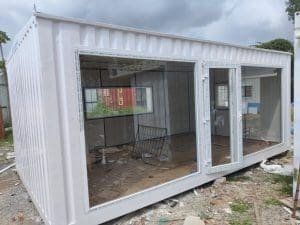
Previously, other types of CoV have been discovered. The nanobiodevice was also tested using real patients and healthy samples, where the results had been already obtained using the standard polymerase chain reaction (PCR) procedure, and showed satisfactory results.Īs a novel human infectious disease, coronavirus disease 2019 (COVID-19) which has been associated with severe respiratory distress was subsequently renamed as severe acute respiratory syndrome coronavirus 2 (SARS-CoV-2) by the International Committee of the Taxonomy of Viruses due to its similar symptom to SARS. The designed nanobiodevice exhibited an average satisfactory recovery rate of ~ 97–103% in different artificial sample matrices, i.e., saliva, artificial nasal, and universal transport medium (UTM), illustrating its high detection performance and practicability.

Moreover, the assay when tested with influenza viruses 1 and 2 was performed in 20 min with a low detection limit of 0.04 fg mL −1 for spike protein without any cross-reactivity.

The electrochemical evaluations proved that there is a very good linear relationship between the charge transfer resistance ( R ct) and spike protein contents via a specific binding reaction in the range 0.25 fg mL −1 to 1 μg mL −1. Accordingly, the sensitivity and stability of the sensing platform significantly increased. In this sense, the screen-printed carbon electrode modified with Cu 2O nanocubes (Cu 2O NCs), which provide a large surface area in a very small space, was applied in order to increase the ProtA loading on the electrode surface. Utilizing the IgG anti-SARS-CoV-2 spike antibody onto the electrode surface as a specific platform in an ordered orientation through staphylococcal protein A (ProtA) is highly significant in fabricating the designed nanobiodevice. In order to facilitate point-of-care diagnosis, this study aims at presenting a label-free electrochemical biosensor as a powerful nanobiodevice for SARS-CoV-2 spike protein detection. Accordingly, testing is crucial for mitigating the economic and public health effects. Opportunities Academy will furnish your student with a Chromebook, communication device, Wi-Fi, or other technology required for your child/children to receive a high quality educational experience on days when students are learning from home.Severe acute respiratory syndrome SARS-CoV-2 has caused a global pandemic starting in 2020. Related services, like speech, physical therapy, occupational therapy, counseling, and transition services will take place either online or on days when students are in person (depending on provider availability).Įligible students may receive wages for internship hours on days when they work on campus.

There will also be regular sanitation of spaces throughout the day. Safety precautions ( i.e., masks, PPE, hand washing, social distancing, and static groups) will be implemented while on campus, with daily temperature checks and symptom monitoring taking place for all students, staff, and visitors upon arrival to campus. Students will not travel off-campus for externships and community trips during the first quarter. Some instruction may take place in a distance learning fashion to reduce the number of students and staff in each classroom, with some groups of students watching a teacher's lesson live on a projector, with support from members of our Job Coach team. There will be all-day classmate groupings in internship experience in the morning and instruction in the afternoon. Student transportation will consist of school buses with one student to a seat. Students will be assigned to an A or B group, with no more than 50% of our student body on campus per day. The Half-Time Model is a great choice for families who don't have the capacity to support students in online learning four-days a week and may feel more comfortable sending students to school in a smaller, static group. Families who choose this option will engage in at-home distance learning two-days a week and in-school learning two-days per week. The Half-Time Model provides safe, reliable, in-person instruction for students to engage in instruction.


 0 kommentar(er)
0 kommentar(er)
